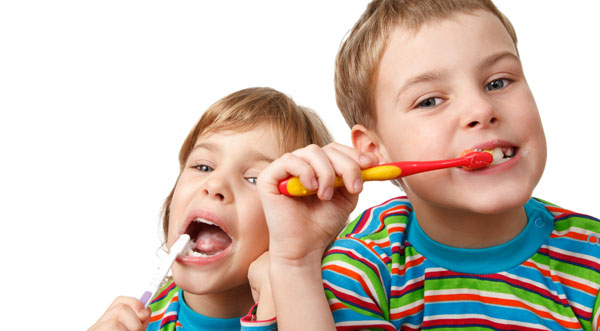Tooth brushing only cleans about 1/3 of total tooth surface area, making flossing an absolute necessity for your child to develop a healthy smile. If your child is not flossing, tartar and plaque can build up between their teeth and cause cavities and lead to gingivitis. Below are some of the risks associated with not flossing.
Bad Breath (Halitosis)
Food debris that’s stuck between teeth can provide a feeding ground for unhealthy bacteria to thrive. The bacteria buildup can emit sulfur compounds that smell awful and leave a bad taste in your child’s mouth. If your child has bad breath that smells similar to rotten eggs, then they may have excessive bacteria buildup due to a lack of regular flossing.
Bleeding Gums and Gum Disease
Not brushing and flossing regularly can cause swollen, sensitive gums that bleed when they are brushed. Bleeding gums are often an early indication of gingivitis, otherwise known as gum disease. Plaque between teeth that is not flossed away can infect the gum line and lead to gingivitis.
The bottom line is this: if your child has tender, swollen gums that bleed when they brush or floss, then it’s time to schedule an appointment and evaluate their oral health. Gum disease is very treatable and can be prevented by regular brushing and flossing.
Excessive Plaque and Cavities
If your child is not flossing, then plaque can build up between their teeth and lead to cavities. Plaque is colorless and difficult to see. When you eat, the bacteria in plaque use the sugars found in your food to create an acid that attacks your teeth. Repeated acidic attacks can wear down tooth enamel and lead to cavities, gingivitis and periodontal disease.
Some Helpful Flossing Tools
Floss is not a one-size-fits-all solution. Teeth come in all shapes and sizes, so cleaning between them presents different hurdles for different people. Below are a few tools that can help you clean between your teeth.
Ultra Floss
Ultra floss is a great flossing solution if your child has different sized spaces between their teeth. Ultra floss can stretch thin to clean between tightly bunched teeth, but is also wide enough to comfortably clean wider spaces.
Floss Threader
If your child has braces, then we suggest that they floss with a floss threader – a device designed to help those with braces floss.
Dental Tape
Dental tape is a great solution for kids with gaps in their teeth. Dental tape is wide, flat and designed to be gentle on exposed gums.
Your Child Should Floss Everyday
Brushing alone won’t keep your child’s mouth completely healthy. They should brush twice per day for two minutes at a time and floss once per day. You can help your child prevent a bevy of oral ailments by convincing them to floss every day. Schedule an appointment with our office today if your child has unnaturally bad breath or experiences bleeding gums when they brush their teeth. We will thoroughly evaluate their mouth and determine the best treatment plan for them based upon our findings.







